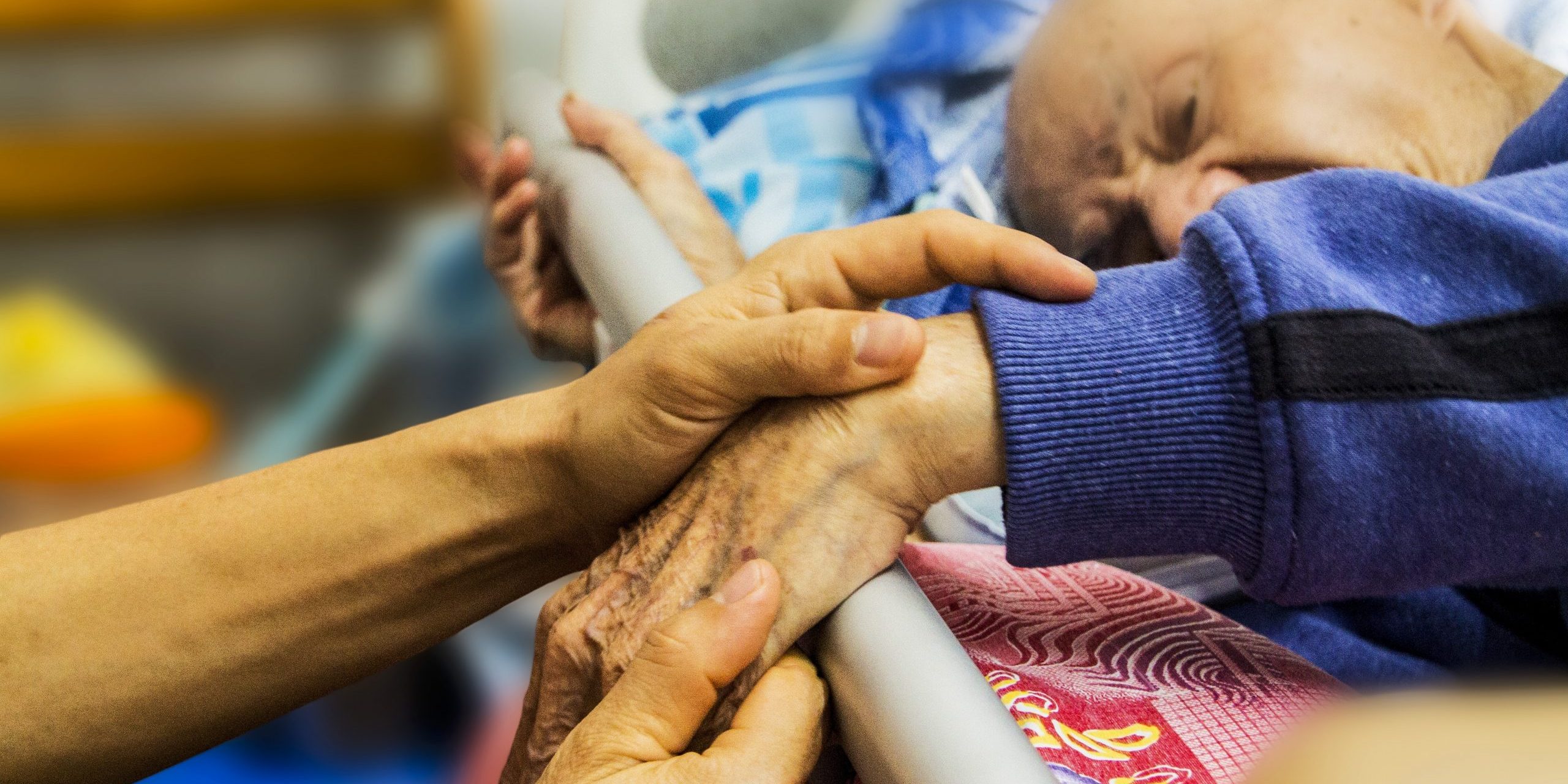Tube Feeding in People Living with Dementia
Melanie Bunn, RN, MS, GNP
Food is one of the most powerful ways we show love and affection for each other. We meet friends for lunch or coffee, remember fondly special family and holiday meals, and celebrate rites of passage with traditional recipes. From the moment of birth, our children are dependent on us for their food and survival.
When we care for relatives and friends with dementia, we often continue to use food as a way of showing our love. Early in the disease well loved dishes continue to have important physical and social benefits; special dishes bring back memories and foster communication and interaction and familiar foods encourage appetite and intake.
In the middle of the disease, eating becomes more challenging. The person will lose the ability to manipulate utensils and may be overwhelmed with the choices to be made. The environment may distract the person and make it difficult to pay attention to eating. Weight loss is common and needs to be addressed by the caregiving team.
However, as the disease progresses, the role of food changes. At the end of life, people living with dementia develop difficulty with manipulating and swallowing food and lose their ability to digest food and absorb nutrition through their stomachs and intestinal tract. They are at risk of aspirating (having food go into their lungs instead of their stomachs) and developing pneumonia. Malnutrition, dehydration and infection are some of the most common causes of death of people living with dementia. Remember-this happens because of the progression of the disease and not lack of care!
Often, caregivers or the health care team raises the question of tube feeding. Families don’t want their loved one to “starve to death” and professional caregivers are afraid of aspiration. Eating takes more time and energy and tube feeding might seem a more efficient method. Studies of end of life care of people living with dementia consistently show that tube feeding neither improves the quality or quantity of life. It’s not cheaper or quicker. Tube feeding does not prevent aspiration; the stomach contents can reflux and still pass into the lungs. At the end life, food is not absorbed into the body for nutrition, but, stays in the gut and causes gas and discomfort or passes out, unused, through the stool. So the issue isn’t ACCESS (manageable by taking a different route), but ABSORPTION (getting nutrients from the intestines into the cells of the body-not helped by a different route). In fact, as a person dies, our bodies release chemicals (like endorphins) that prevent us from feeling hunger and thirst. Dying in this way seems to be a peaceful and natural process for the person with dementia.
As a loving care partner, how do you deal with this important issue?
- Advocate for your loved one-is this truly a terminal decline or are there reversible issues that need to be addressed? Physical factors such as constipation, poor dentition or medications can cause anorexia or loss of appetite. Cognitive factors such as attention and inability to sequence could limit intake. Depression occurs in 50% of people living with dementia and often results in loss of appetite. All these possibilities need to be addressed and managed before moving into a palliative care approach.
- Discuss end of life wishes-what kinds of care does the person living with dementia want? Most people living with dementia desire a natural and quiet end to their lives without a lot of medical interventions. Pass on to your own family and friends your own wishes.
- Provide other types of comfort to the person at the end of life-touch and tone. Touch such as gentle massage or holding someone’s hand is a powerful method of communicating love and affection. Speaking softly, reciting prayers, singing familiar songs and playing beloved music can provide tremendous comfort.
- Use food and fluids more as treats or sensory experiences rather than life sustaining-offer the person the taste of chocolate ice cream (or another favorite) on his or her tongue and observe the response.
- Life and care is more than food. Spending time with the person just talking or sitting is more precious than battling to get another bite of food in.
- Don’t feel guilty about not using artificial nutrition and tube feeding. Remember-the disease not the decision is causing the person’s death.
- Find an educated and knowledgeable person to discuss these decisions with-many lay people and even some health care professionals are not informed about the science behind the difficulties with tube feeding.


